Hagenbuchs Face Danger on Pennsylvania’s Frontier
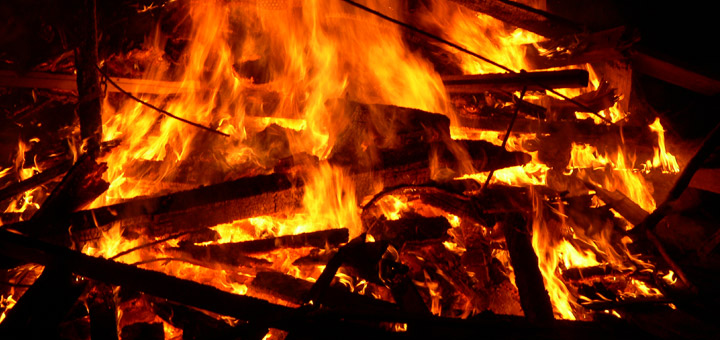
It’s difficult to imagine the hardships faced by Andreas Hagenbuch and his family upon their arrival in Pennsylvania in 1737. Outside of cities like Philadelphia, there were few amenities or protections. Frontier areas such as the Allemaengel (where the Hagenbuchs settled in 1738) were wild, distant places. By necessity, families had to be self reliant, even when confronted with the violence of war.
In 1754, war broke out between Great Britain and France over land interests, especially those in the Americas. So began what is known today as the French and Indian War. During the conflict, both the French and the British allied with different tribes of American Indians and encouraged them to participate in guerrilla warfare. Some tribes, having been forced from their lands by settlers, willingly agreed.
For decades, Pennsylvanians had enjoyed relative peace with the local Lenape Indians. However, after years of encroaching settlement and controversial land grabs like the Walking Purchase, those good relations were at a breaking point. During the war, the Lenape sided with the French and began attacking frontier settlements near the Blue Mountains. Numerous homes in Albany Township, Berks County, PA were targeted between 1756 and 1763. Many of these were situated along the Allemaengel Road, where the Hagenbuch family had built their homestead.
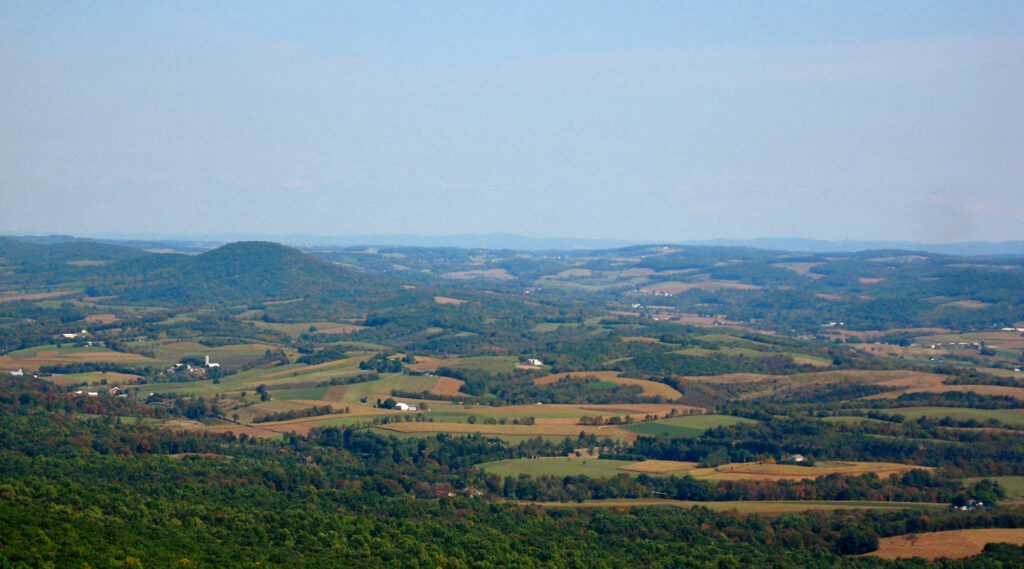
View from Hawk Mountain looking towards the Hagenbuch Homestead (located near the white silo on the left side of the image). Flickr/pwbaker
Below are a series of firsthand accounts from the Allemaengel region of Berks County during the French and Indian War. Amazingly, some of these mention the Hagenbuch family by name and demonstrate the dangers faced by them and their neighbors.
February 7, 1756—From a letter by (Jean) Valentine Brobst to Jacob Levan about a raid that occurred about a mile west of the Hagenbuch homestead, near what is known today as Hawk Mountain. Frederick Reichelderfer is mentioned as bringing his wounded child to the Hagenbuchs’ house.
I cannot omit writing about the dreadful circumstances of our Township, Albany. The Indians came yesterday morning, about 8:00 o’clock, to Frederick Reichelderfer’s house. As he was feeding his horses, two Indians ran upon him, and followed him into the field 10 or 12 perches behind; but he escaped and ran toward Jacob Gerhart’s house, with a design to fetch arms. When he came nearer Gerhart’s, he heard a lamentable cry “Lord Jesus, Lord Jesus,” which made him run back towards his own house, but before he got quite home, he saw his house and stables in flames; and heard all the cattle bellowing, and thereupon he ran away again.
Two of his children were shot, one of them was found dead in his field, the other was found alive and brought to Hagenbuch’s house but died three hours after. All his grain and cattle were burnt up. At Jacob Gerhart’s they had killed one man, two women, and six children. Two children slipped under the bed; one of which was burned; the other escaped and ran a mile to get to people. We desire help, or we must leave our homes.
June 25, 1757—Letter from James Reed to David Schulrz about another attack. Adam Drum (Trump) was a neighbor of the Hagenbuchs, and his land was adjacent to theirs.
Last night Jacob Levan came to see me, and showed me a letter of the 22d inst. from Lieutenant Engle by which he advised Mr. Levan of the murder of one Adam Trump in Allemangel, by Indians that evening, and that they had taken Trump’s wife and his son, a lad of nineteen years old, prisoners; but the woman escaped, though, upon her flying she was closely pursued by one of the Indians (of which there were seven), that he threw his tomahawk at her, and cut her badly ill the neck, but ’tis hoped not dangerously.
This murder happened in as great a thunderstorm as has happened for twenty years past: which extended itself over a great part of this and Northampton Counties—for I found much mischief done, as I came from Easton, Northampton County, to this place, the length of fifty two miles, the day before yesterday, and which I hear has broken down the dams of seven forges, and six gristmills, on Maxatany creek, chiefly in this county; the rest in Philadelphia County. I almost forgot to mention (but am so hurried just now, ’tis no wonder) that the Indians, after scalping Adam Trump, left a knife, and a halberd, or spear, fixed to a pole in his body.
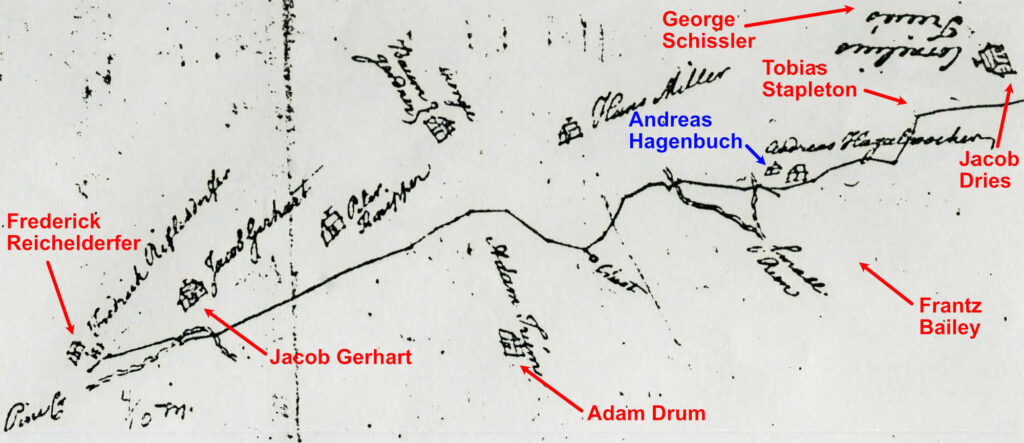
Homes attacked (red) along the Allemaengel Road (black line) which runs along the base of the Blue Mountains. The Hagenbuch Homestead is noted in blue.
November 21, 1763—From a report in the New York Mercury newspaper. The Baileys and Stapletons were neighbors of the Hagenbuchs and owned adjacent properties. Andreas Hagenbuch and his sons Henry and Michael are referenced in the article.
Philadelphia, November 15: The following account we have from Reading, in Berk’s County, viz: That on the 8th Inst. in the morning, the house of Frantz Baily, in Albany Township was attacked by a party of Indians, who fired several times through his windows upon which he got up and fired at the enemy, when he received a wound in his wrist and one of his children, a boy, was killed. That one Hagenbuch, and two of his sons, hearing the firing went to his assistance, which made the Indians go off, without destroying the house or barn.
That they next went to the house of one Stapleton, but one of his sons seeing them, fired off a gun, which occasioned their passing by that house and going to George Schissler’s, where they tomahawked and scalped his wife, mangled her in a most cruel manner, and left her in a condition which a regard to decency forbids to mention; they likewise killed one of Schissler’s sons, whom they scalped, and half roasted; and burnt his dwelling house, barn, and all the other buildings; that from Schissler’s they went to Jacob Trees’s [Dries’s], killed one Shober, and destroyed the house and barn; that they then plundered Daniel Smith’s house and burnt it, with all his other buildings. And that after all this, they proceeded to Philip Enos’s, about 3 miles from Smith’s where they made prisoner a lad about 13 years of age who afterwards escaped from them.
The number of Indians that did this mischief is said not to exceed 9, who spoke English and some Dutch. The quantity of grain destroyed is thought not less than 2000 bushels, and the condition of the inhabitants is most melancholy, there being in several houses not less than 30 or 40 children, besides men and women, and all obliged to fly for their lives without being able to bring off any thing for their support.
The attack on George Schissler’s wife, who was left “in a condition which a regard to decency forbids mention” is explained further in The Centennial History Book of Kempton, PA.
On the farm now owned by John Turn, there lived a family by the name of George Schissler. With them lived a brother Conrad Schissler. These people had erected a dwelling about the time of 1738, after the fashion of those early colonial days, and were enjoying themselves and living by the fruits of their labor. One day while the men were away from the house, a party of Indians appeared. Mrs. Schissler was engaged in baking bread. The Indians took advantage of this, heated a liberal amount of dough, opened her abdomen and poured the heated dough into her body, leaving her lying, and next satisfied themselves by burning down the cabin and escaped before the men arrived. This woman was still alive when the men returned but soon expired.
These accounts provide a fascinating look at the dangers faced by Andreas Hagenbuch, his family, and others during the French and Indian War. It is worth noting that in Valentine Brobst’s 1756 letter, the wounded Reichelderfer child was brought nearly a mile to the Hagenbuchs’. This suggests that the homestead was a place of refuge during times of conflict.
Perhaps it had at least one well-built structure that lent itself better to defense? Or maybe the Hagenbuchs were known for their courage? That is certainly evident in the 1763 account where Andreas and his sons ran to assist the Bailey family. While many of their neighbors were attacked during the French and Indian War, the Hagenbuchs never were.
An entry in the Pennsylvania Archives regarding troop deployments sheds some additional light on the subject.
A return of the troops commanded by Major Asher Clayton, stationed on the frontiers of Lancaster, Berks, and Northampton Counties, June 1st, 1764.
In Berks County.
Hagabaugh’s [Hagenbuch’s], Albany Township, Lieut. John Sitzhoupt, 15 men.
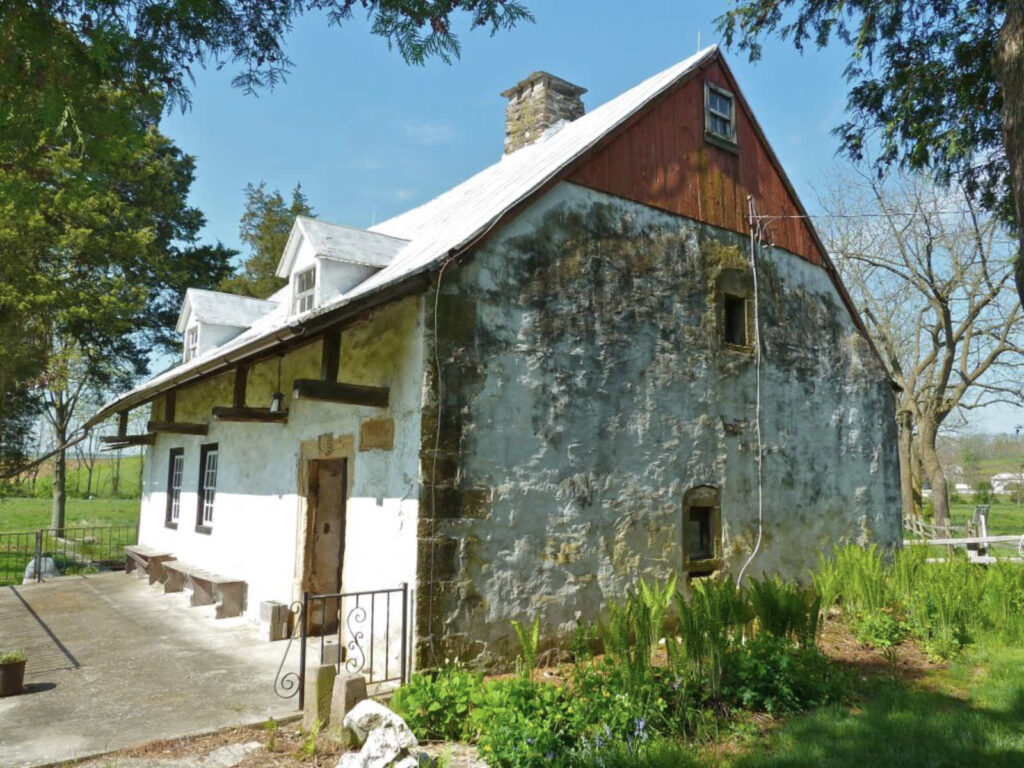
Fortified homes were used as places of refuge by frontier families. Above is the 18th-century Fort Zeller in Lebanon County, PA. FortWiki/John Stanton
During the French and Indian War, forts and garrisons were used to defend the frontier areas of Pennsylvania, especially along the Blue Mountains to the north of the Allemaengel. According to the above, 15 men returned after being stationed at the Hagenbuch Homestead. This fact further bolsters the theory that there was some strategic importance to the location. It also means that the homestead had sufficient buildings and resources to house over a dozen soldiers.
The French and Indian War ended in February of 1763. However, peace did not immediately come to the Allemaengel. Attacks on settlers by the Lenape continued for several years following the war’s conclusion. Deaths were reported through the end of 1763 and troops were not withdrawn until 1764.
Today, the hardships faced by Pennsylvania’s frontier settlers seem a distant memory. Albany Township in Berks County is a peaceful place filled with rolling fields and country roads. Even so, it’s important to remember that for the Hagenbuchs and their neighbors, the threat of danger, violence, and death was once very real.
This article was updated on September 23, 2025 to include updated details, links to other articles, and a map of where the attacks occurred along the Allemaengel Road.

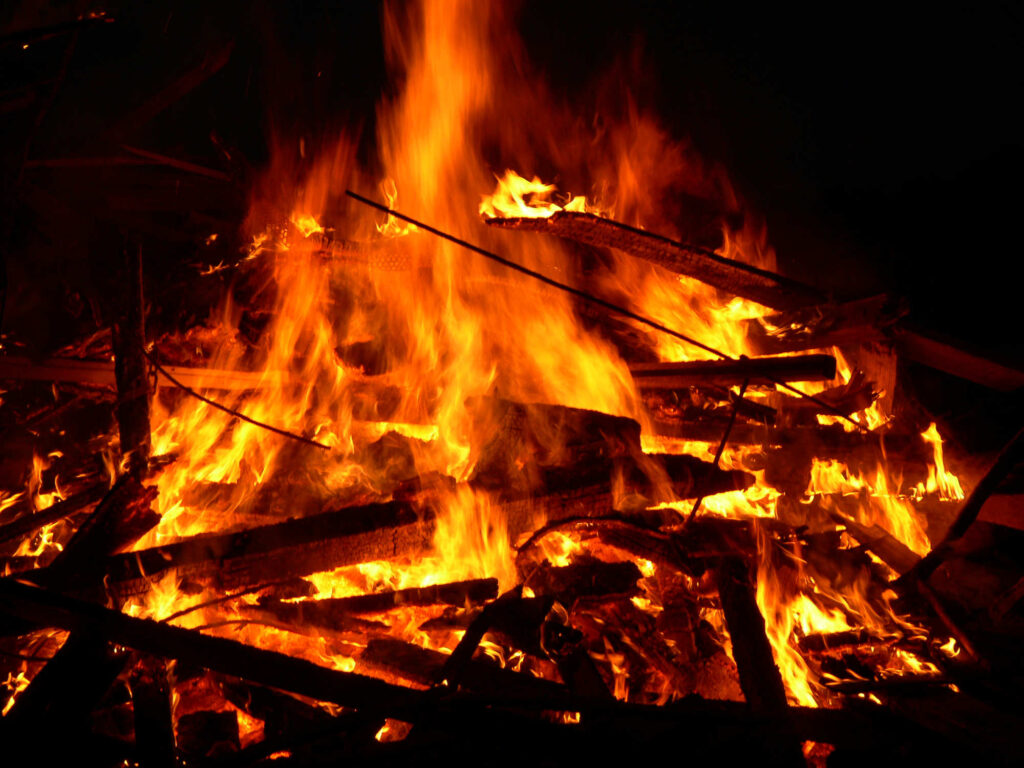
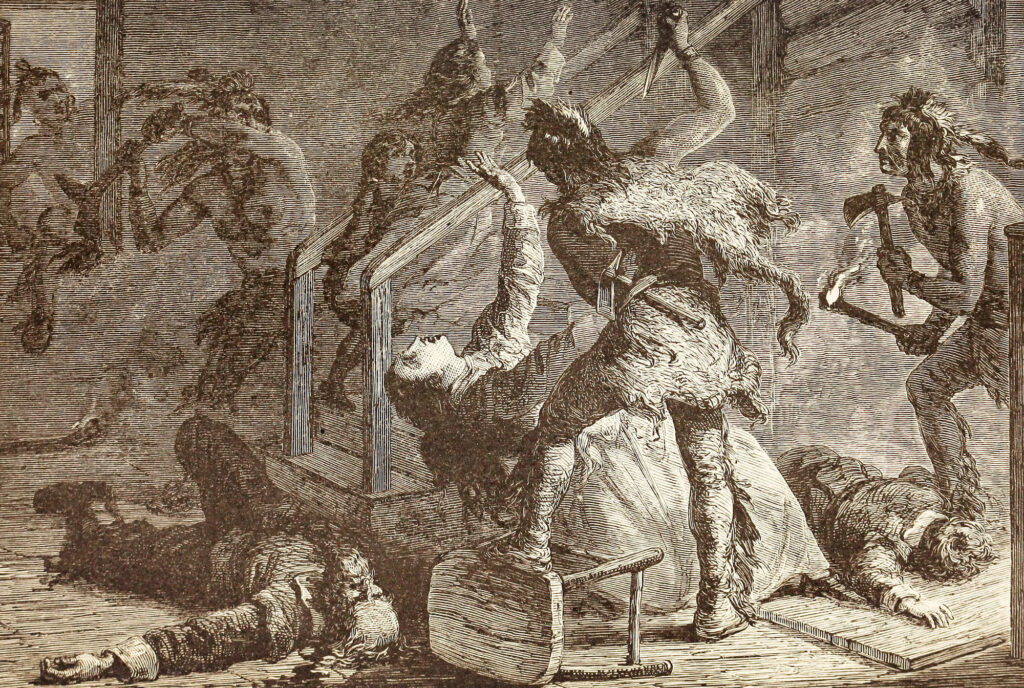
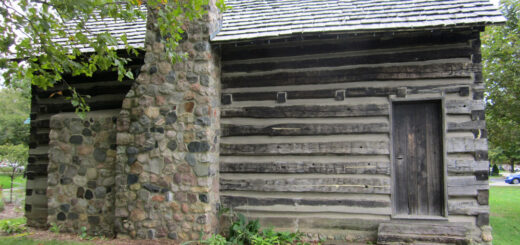
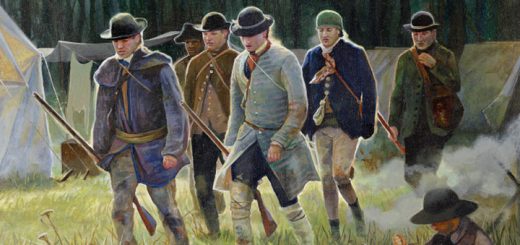








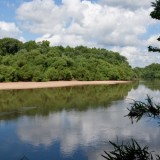




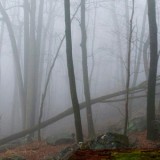

where is location of frederick reicheldelfer house today ..is it eckville or……..i m .confused…frederick reichelderfer..jacob.gerhardt.and andreas hagenbuch..all tree location is close..but i cant find info about mr reichelderfer farm.wheer is located…greetings from europe
I would also like to know current location of what was Frederick Reichelderfer house/ farm? We are decendents of them and would love to visit when possible. thank you for the great information you publish!
Hi Matt. This resource you may have seen and could be helpful: https://books.google.com/books?id=UdS3BDoCPBMC&lpg=PA926&ots=27MAjYsTpL&dq=reichelderfer%20bolich&pg=PA926#v=onepage&q=reichelderfer%20bolich&f=false
I have a map of early landowners of Albany Townships. Using the waterways, you can match Frederick Reichelderfer’s land to about here: https://goo.gl/maps/MTe6bgUEy3jtQjJe6 There is an old burial ground up in a field here: https://www.findagrave.com/cemetery/2757715/bolich-farm-burial-ground
If you send me a message https://www.hagenbuch.org/contact-us/, I can email the map to you.
I can’t thank you enough! Greatly appreciated! We live in Florida – my mother was Mary Mignon Reichelderfer – father was Bernon Cox Reichelderfer. Love the family history! I hope to be visiting QVC in West Chester and to have time to drive up to the old homestead. thanks again!